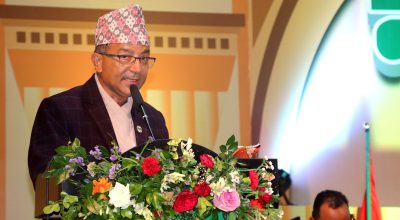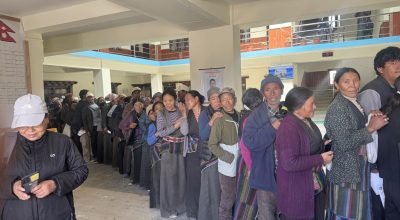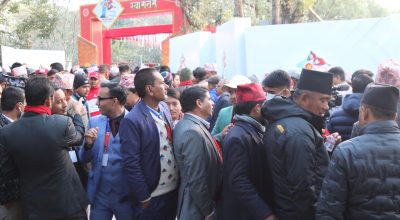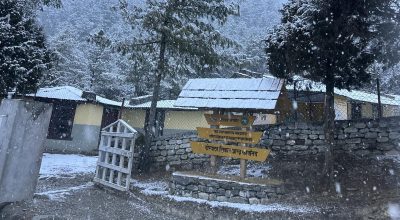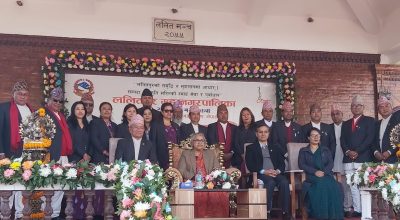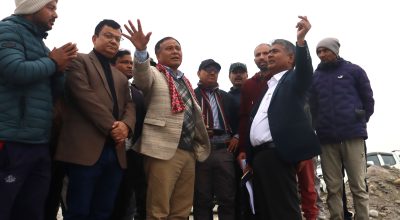
Meer M. Parihar

PERHAPS for the first time in the country’s history, a plan for the construction of a multibillion-dollar barrage on the Indus River was conceived and approved in less than a month.
A brainchild of the Water and Power Development Authority (Wapda), the Sindh Barrage is an attempt to resolve chronic water shortage in the coastal districts of Sindh. However, the haste and secrecy with which the project has been approved by the federal and provincial governments is baffling.
A short promotional video of the proposed Sindh Barrage — to be built at a cost of Rs125 billion, around 45 kilometres away from the outfall where Indus River falls into the Arabian Sea — is available on the Wapda website. In the video, the Wapda chairman is seen standing on the construction site, with the Indus River behind him. In the video, he cites controlling aggressive sea intrusion; irrigation of 75,000 acres of land in Thatta, Sujawal and Badin; and reviving the rich mangrove wetlands as reasons for the construction of Sindh Barrage. He also alludes to a potential plan of converting the 167 km-long river belt — between Kotri Barrage and the proposed Sindh Barrage — into a water reservoir, which could become “one of the longest lakes in Asia”.
To achieve these objectives, Wapda intends to construct a 12-metre-high barrage, raise the bank of Indus River to 9m, while also widening the river belt up to six kilometres. It also plans to dig two canals on the left and right side of the proposed barrage. Construction is set to begin in December 2022 and is expected to end by December 2024.
The plan to construct the Sindh Barrage has many flaws.
The plan may sound well in theory but it has many flaws. One of the primary factors that decides the feasibility of Sindh Barrage is the availability of water downstream Kotri. Wapda believes that this can be managed by regulating the outflow from Kotri Barrage to be slightly more than 10 MAF (million acre feet) to ‘control’ sea intrusion. However, there are two caveats to this solution: first, experts have been arguing for years that an inflow of only 10 MAF from Kotri to the Indus delta is insufficient to push back the inflow of the Arabian Sea, and prevent destruction of riverbeds and agricultural land. Second, according to Wapda’s own figures, around 9,000 km of the coastal belt has already been affected by sea intrusion, proving that the flow of water downstream Kotri has remained inadequate over the years.
The Sindh government has conveniently foregone any risk analysis before approving this project. But once construction begins, it will have to rehabilitate hundreds of families who are displaced from areas close to the construction site. The number of displaced families will be far greater if the plan for converting the river belt downstream Kotri into a lake goes ahead, as the proposed lake will span over at least four districts between Kotri and the Indus Delta — Thatta, Sujawal, Tando Mohammad Khan and parts of Jamshoro.
Once the barrage is built, constant seepage of water from the reservoir will destroy agricultural land in adjoining areas. On the other hand, permanent blockage of the flowing river will give rise to other grave problems. For starters, it will put a number of areas around and downstream Kotri Barrage, including Hyderabad, at the persistent risk of flooding.
Second, formation of silt dunes and the presence of heavy sediment in the large body of water will hamper the flow of the river that, if stopped, will find alternate paths to spill. This might not only result in the Indus changing its course, but also altering the geography and topography of areas downstream Kotri Barrage.
As for Wapda’s plans to construct two canals on either side of the Indus River to irrigate 75,000 acres of agricultural land, if the authority had done proper research, it would have realised that not a single acre of cultivable land in the coastal belt of Sindh is out of the command of the existing canal network.
The death of the Indus delta and loss of agricultural land due to sea intrusion, and the workability of a solution to this problem come down to the availability of river water. Over the years, irregular allotment of agricultural land downstream Kotri, and theft and pilferage from the existing canal network, have compounded the chronic water shortage in Badin, Sujawal and Thatta, causing lasting damage to these districts. Water resources in Pakistan require effective management, rather than ambitious projects that ignore ground realities. Constructing a barrage on a river with insufficient water will hardly serve any purpose, other than exacerbating the process of sea intrusion and accelerating the death of Indus delta.
(Source: The Dawn, Pakistan)
The writer has served as irrigation and power secretary in Sindh, Pakistan.








